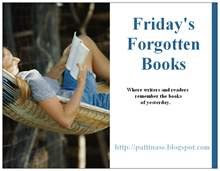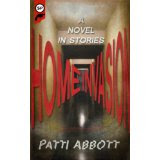(what a great reviewer Ron was)
Hamlin Garland, A Son of the Middle Border (1917)
 |
| First edition |
Farm work was more mechanized, and gas-powered tractors had taken the place of horses. Improved roads and automobiles had shortened distances. But farm work was still hard, often grueling labor at the mercy of the elements. There was dust, manure, and mud, and whether bumper years or drought and crop failures, farm life was isolated and lonely.
Realism. Garland’s realistic portrayal of it—the
beauty as well as the ugliness—collided with two different streams of thought
about rural America in the early 20th century. One was a pastoral,
bucolic, and picturesque vision of simple, wholesome living far from the
corruptive influence of the city. Another was the go-west boosterism that
coaxed settlers from the East and abroad to snap up free land and get rich as
agricultural producers. Garland saw in his own family’s example the empty
promise at the heart of both visions.
 |
| The Garland family |
The
lure of the West, as Garland came to
see it, was even more devastating in its effect. His pioneering father
moved west
a total of five times, with time off to serve as a Union soldier during
the Civil
War. As a boy, Garland went with his family from their farm near La
Crosse, Wisconsin, to a homestead community near Osage, in northeast
Iowa. At the age
of 10 he was plowing virgin sod there with horses.
The next move was to the James River Valley near Aberdeen in Dakota, where his father eventually acquired 1000 acres of prairie, converted to wheat. But after 2 – 3 years of crop failure he was ready to move once again, this time to Montana, where there was irrigation for farming. By now able to supplement his father’s income, and seeing his mother’s failing health, Garland persuaded his parents to return to Wisconsin, where they could spend their last years with the friends and family who never left.
 |
| Farewell gathering |
In Dakota, Garland observes that “nearly
all, even the young men, looked worn and weather-beaten and some appeared both
silent and sad.” He sees “the tragic futility of their existence,” their lives
“dull and eventless.” Influenced by the social-economic theory of Henry George,
he blames the system of land ownership, which has pushed settlers from the East
and Europe/Russia onto western lands, where with “unremitting toil” they labor
to feed and clothe families while remaining impoverished and fugitive.
 |
| Seminary graduation |
Interesting for book lovers is Garland’s
recollection of his McGuffey Readers
and how he supplemented his formal education with other reading material: 100
(by his count) dime novels, Hawthorne, Scott, Cooper, Paradise Lost, Twain’s Roughing
It, western poet Joaquin Miller, The
Life of P.T. Barnum, Franklin’s Autobiography,
and Edward Eggleston’s Hoosier Schoolmaster,
“a milestone in my literary progress,” he notes, “as it is in the development
of distinctive western fiction.” Plus magazines and weekly newspapers: Hearth and Home, New York Saturday Night, New York Ledger, and New York Weekly.
Yet another thread of the book is Garland’s
struggle as a starving writer and lecturer in Boston where he ekes out a
living, while befriending the likes of novelist and editor William Dean Howells
and eventually wins the praise of Walt Whitman. He is also deeply affected by the
performances of Shakespearean actor Edwin Booth, who taught “the dignity, the power and the
music of the English tongue.”
 |
| Hamlin Garland, 1893, age 33 |
Mostly I want to recommend this 467-page book as an
excellent reference for any writer placing a story on the prairie frontier
during the decades following the Civil War. It’s a valuable lesson in social
history as it captures a period of rapid national transition, with a realism
that is a corrective to the somewhat different view of Little
House on the Prairie.















2 comments:
Garland was a popular and terrible poet ("Do You Fear the Force of the Wind?"), but Ron made a persuasive case for this book...
Just read this myself, in the original hardcover edition. I think an essay by Christopher Morley led me to it. I've grown to enjoy these regionalists whose personal experiences help tell the history of an era. In this case, it was the history of both westward expansion and the literary life of the late 1800's. The drawings by Alice Barber Stephens were also wonderful.
Post a Comment